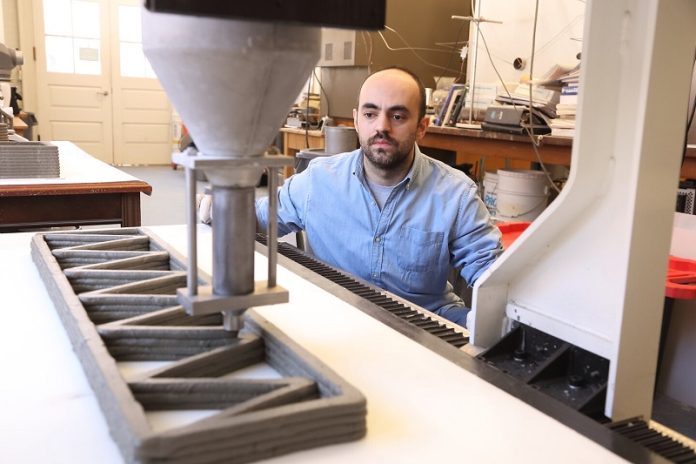
A team of engineers at the University of Virginia School of Engineering and Applied Science has discovered a way to enhance 3D-printed concrete using cellulose nanofibrils (CNF), a plant-based material made from wood pulp.
This new approach could lead to stronger and more eco-friendly construction practices.
Professor Osman E. Ozbulut, who led the research, explained the significance of their findings.
“The improvements we saw in both printability and mechanical strength suggest that incorporating CNF in commercial printable materials could lead to more resilient and sustainable construction sooner rather than later,” he said.
Their research will be published in the September 2024 issue of Cement and Concrete Composites.
3D-printed concrete is revolutionizing the construction industry. It allows for quick and precise building, potentially using recycled materials, reducing labor costs, and minimizing waste. This technology also enables the creation of intricate designs that traditional methods struggle to achieve.
The process involves a specialized printer that lays down a cement-like mixture in layers, guided by computer-aided design software. However, the materials currently available for 3D printing concrete are limited, and questions remain about their sustainability and durability.
“We’re dealing with contradictory objectives,” Ozbulut explained. “The mixture has to flow well for smooth fabrication but also harden into a stable material with good mechanical strength, strong interlayer bonding, and low thermal conductivity.”
Cellulose nanofibrils, known in the industry as CNF, are renewable and have a low environmental impact. They show great potential as an additive to improve the flow properties and strength of concrete composites.
Until this study, the effects of CNF on 3D-printed concrete were not well understood. Ozbulut’s team conducted meticulous experiments in their Resilient and Advanced Infrastructure Lab to explore these effects.
The researchers experimented with different amounts of CNF additive. They found that adding at least 0.3% CNF significantly improved the flow performance of the concrete mixture. Microscopic analysis of the hardened samples revealed better bonding and structural integrity.
Further testing showed that CNF-enhanced 3D-printed components performed well under pulling, bending, and compression. This suggests that CNF can make 3D-printed concrete structures more durable and reliable.
The study highlights the potential of cellulose nanofibrils to improve the performance of 3D-printed concrete. By incorporating this plant-based material, the construction industry could achieve more resilient and eco-friendly building practices, paving the way for a sustainable future.



